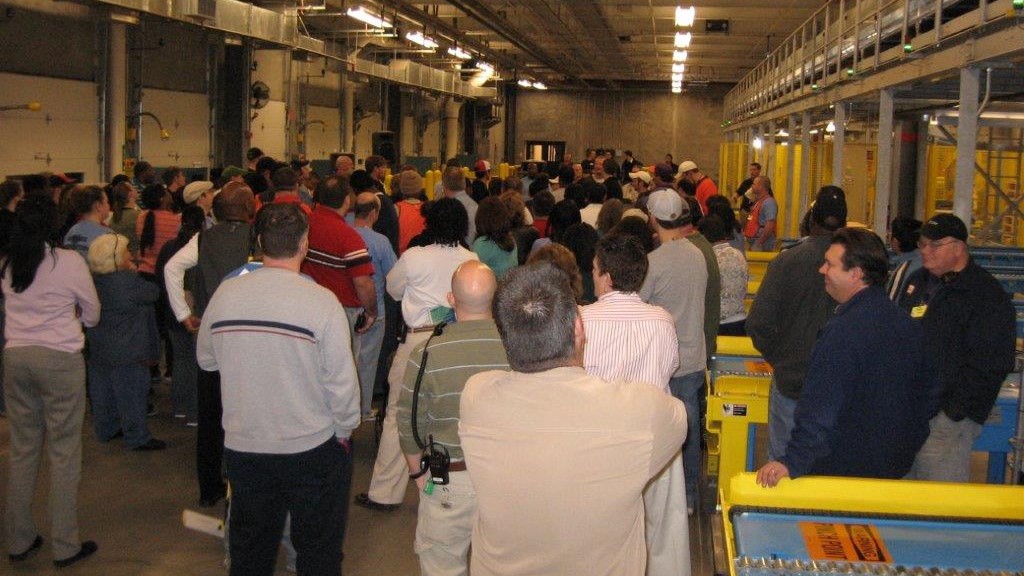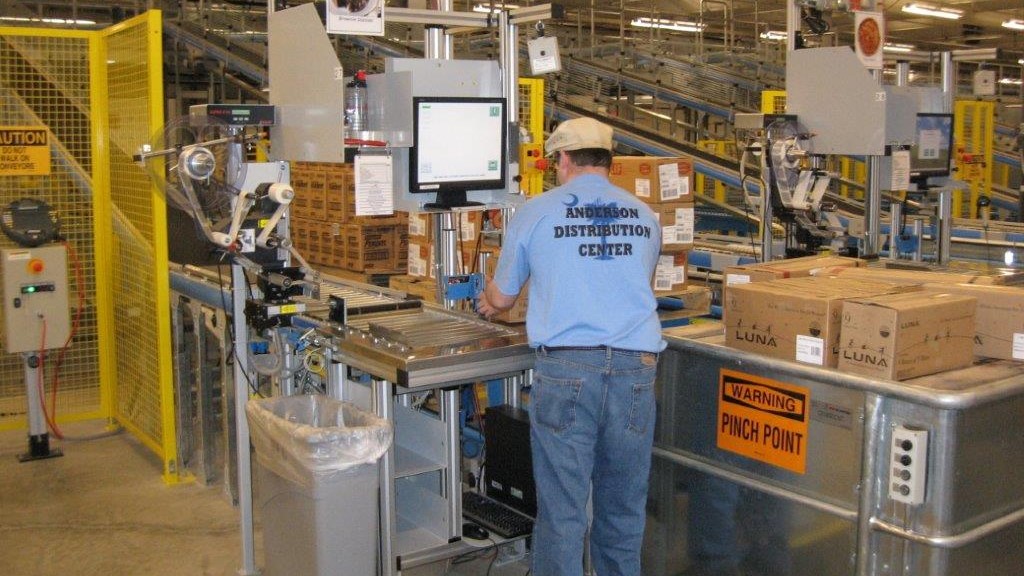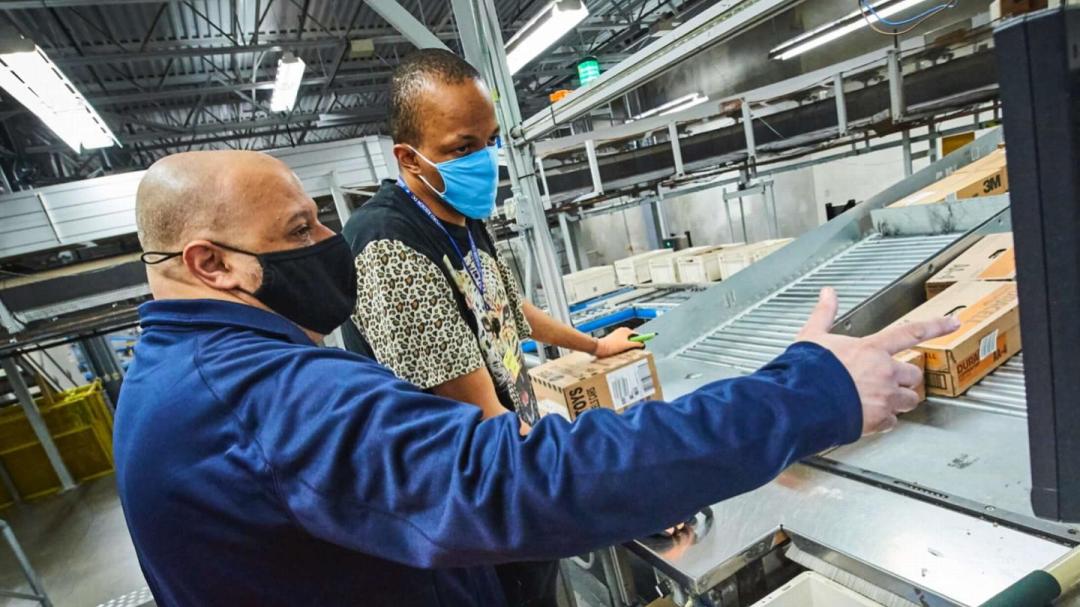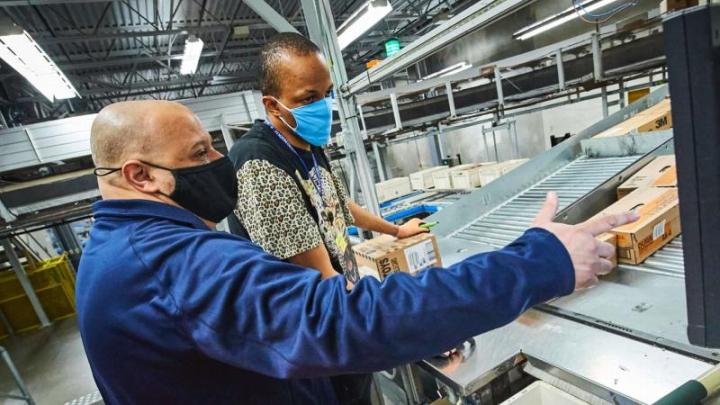Step inside the Walgreens distribution center in Anderson, S.C., and you’ll be met with a bustle of activity—team members unloading merchandise, forklifts hauling boxes and loads of deliveries whizzing along conveyor belts, waiting to be sorted, distributed onto trucks and shipped to nearby stores.
What won’t be clear to the eye is that about 30 percent of the team members at the facility have disabilities. What also won’t be clear is that the turnover rate for these team members is 40 percent lower than those without disabilities.
These team members were hired through the Transitional Work Group (TWG) program, a placement program developed by Walgreens for people with disabilities that range from physical to mental and sensory. Conducted in partnership with third-party organizations, social services and vocational rehabilitation programs, the 13-week program includes classroom training, in-warehouse training, social skills practice and education in workplace and Walgreens policies.
Marc Senia, field manager of disability inclusion, has spent years visiting distribution centers and measuring the success of the program.
“We’ve been a leader in this space. The program has been going for 15 years,” says Senia. “It gives people a sense of belonging. It lets them gain their independence. It lets them be part of the community and contribute to a company in a meaningful way.”
The first graduates of TWG were hired in 2007 when the then-new distribution center was opened in Anderson. Greg Swilling, general manager, was there for launch, and observed two things: The new hires were eager to learn more on the job, and by learning more about individual abilities, they could evolve the distribution center to be more accessible over time.
 A group of TWG team members in the Anderson, S.C. distribution center in 2007.
A group of TWG team members in the Anderson, S.C. distribution center in 2007.
“When the facility opened in Anderson, it was a very advanced building in its technologies,” recalls Swilling. “There wasn’t anything else like it. But we initially struggled a bit with our technology when the TWG program began. But the participants were very helpful in telling us what we could change. So instead of going, ‘Why are we not doing this?,’ we asked ourselves, ‘How can we do it?’”
The team is dedicated to thinking creatively to set each team member up for success. In one instance, a product picker with cerebral palsy was picking 30% of their daily goal because they had difficulty closing their hands around items to place them in boxes for shipment.
“We rallied around this individual and connected with a glove manufacturer to get them gloves that are sticky. Then we worked with our maintenance team to create a button that they could slide over rather than push. It cost about $2 to implement, and they were picking 100% in a couple of days. We just needed a little bit of ingenuity. And this person worked here for many years until they retired.”
To date, the program has expanded to 12 distribution centers. More than 1,000 people with disabilities have been hired with a 75% training-to-hire placement rate. Due to the success of this first-of-its-kind inclusion hiring model, other businesses have taken note—and asked how Walgreens did it. Rather than withhold the knowledge, the company decided to share it for the greater good.
“We invite these companies in for what we called ‘Inclusion University,’ where they spend a couple of days with us. We go through our curriculum, teach them leadership skills, tour our buildings. And then they can see the awesome opportunity Walgreens offers individuals with disabilities with their own eyes,” says Senia, who leads many of these tours for Fortune 500 companies today.
“As a leader in disability inclusion, I’m proud that we’re opening doors for other companies. I’m glad to know we’ve had a hand in helping other businesses set up their models. We’re helping people with disabilities overall, and that’s the way we’ve always looked at it,” says Senia.

A TWG hire completing case checks in the receiving department of the Anderson, S.C. facility in 2007.
In 2022, Walgreens was recognized by Disability:IN with a 100% score on its Disability Equality Index for the sixth year in a row. The index is considered the most comprehensive benchmarking tool for corporate disability inclusion and was developed by disability advocates and business leaders. TWG and Retail Employees with Disabilities (REDI), a program similar to TWG that places people with disabilities in cashier and other retail roles, were major contributors to Walgreens accreditation. In November 2022, Walgreens Boots Alliance announced that its annual bonus plan in the U.S. would now include a disability representation metric, the first company in the S&P 500 to do so.
Since TWG began, new hire orientation for all new Walgreens supply chain team members has included a two-hour training on disability awareness and etiquette. According to Senia, plans are in the works to expand training for managers so that leading in an inclusionary workplace becomes a regular component of the onboarding process.
In Anderson, training managers in disability awareness has already become standard practice, which has led to an embedded mentality of working alongside TWG hires.
“What's very interesting is that when we first started TWG, there was some concern about how the entire team would interact,” says Swilling. “But we just saw that the team members without disabilities nurtured these folks. And the folks with disabilities nurtured them, too. When you walk into our break rooms, there's no ‘us or them’ from that standpoint. It's one team: Walgreens.”
Similarly, a distribution center in Houston has incorporated the TWG program into its operations for over a decade. One TWG team member, Annie Green, has been on staff for 13 years. She originally started as a product picker, but has since worked in shipping and receiving, where she is today, along with assisting the utilities department. Due to her thorough, time-conscious work and devotion to keeping the facility safe and clean, she won a Champion of Champions Award in 2021. This highly prestigious award is bestowed on select Walgreens team members every year.
Green also happens to be deaf.
“I write out what I need sometimes or use my phone to communicate because I can translate to Spanish,” she shares. “Sometimes my co-workers spell out the words to me. They’ve learned sign language after starting to better communicate with me. One of my favorite parts of the job is just being with my friends and helping each other out.”
It’s both the camaraderie among the team and individual growth—something that can’t be tracked in a report—that has kept the TWG program successful for so long. Senia’s team is doubling in size this year and he is dedicated to offering part-time positions in addition to full-time roles to TWG hires. He has seen the impact these jobs can offer people with disabilities, and how it gives them much more than a paycheck to bring home.
“Before joining Walgreens, one TWG hire used to push shopping carts and was told that was all he would do in life. Now he works in one of our facilities; he’s a car junkie and his goal is to have a car for every day of the week. We’ve had folks come through who have met each other and gotten married, who may have never had a relationship otherwise. They’ve bought their own condo and moved out of their parents’ homes and started their own lives. To give someone a position that can make their passion and dreams come true is what it’s all about.”

